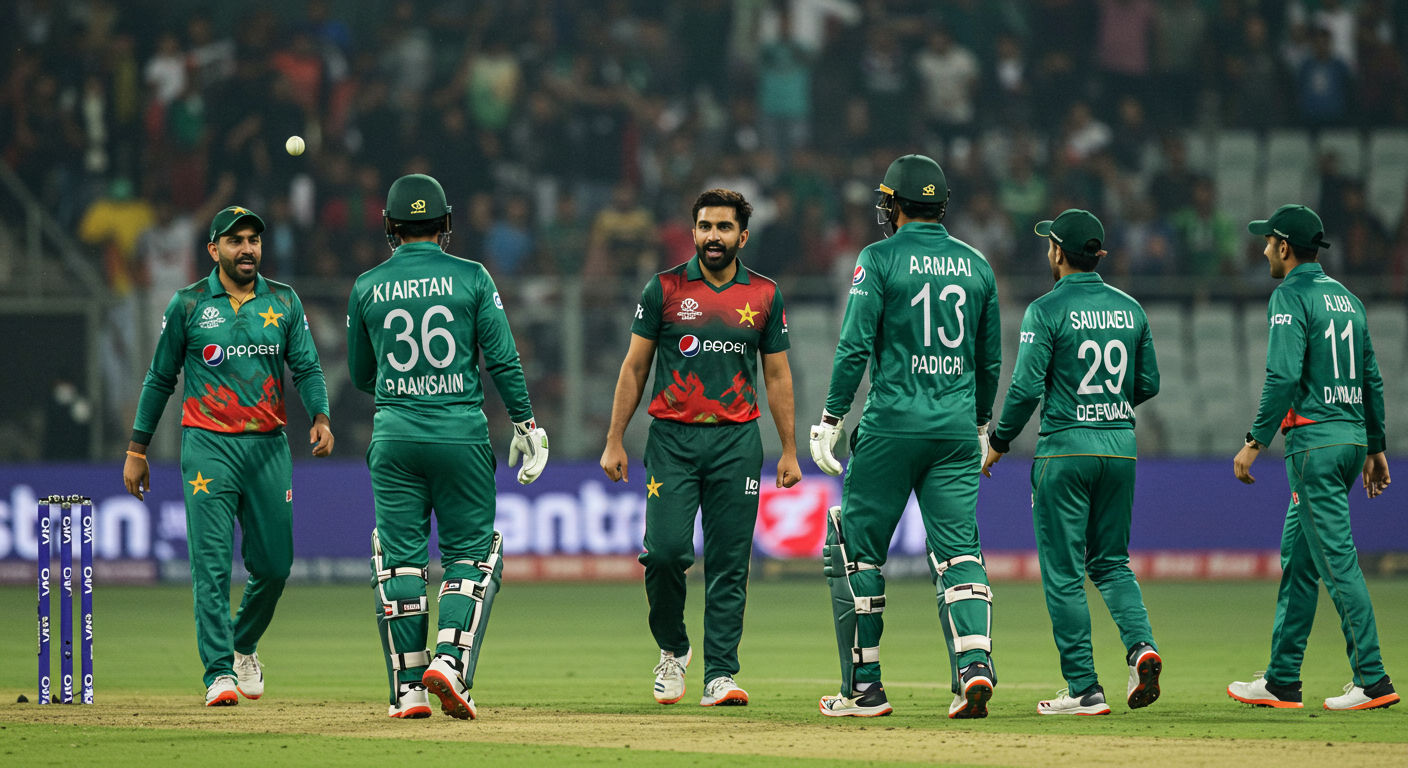Pakistan Cricket Team Captain in Australia T20: A Deep Dive into Leadership and Performance

Pakistan Cricket Team Captain in Australia T20: A Deep Dive into Leadership and Performance
Pakistan’s T20 journey in Australia has often been defined by moments of brilliance punctuated by occasional setbacks. The leadership of the captain, a pivotal figure in any sporting team, plays a critical role in shaping these outcomes. This article delves into the challenges and triumphs faced by Pakistan’s T20 captain during their recent matches in Australia, analyzing their leadership style, strategic decisions, and the impact on team performance.
The Pressure Cooker of Australian T20 Cricket
Australia, renowned for its passionate cricket fans and challenging playing conditions, presents a unique set of hurdles for visiting teams. The unpredictable nature of T20 cricket, with its emphasis on aggressive batting and tight bowling, adds another layer of complexity. Pakistan’s captain, often facing immense pressure to deliver in these high-stakes matches, must navigate the intricacies of match scenarios, player motivation, and team dynamics.
The captain’s role is not merely about on-field strategy. It encompasses the entire spectrum of team management, including player morale, team bonding, and effective communication during high-pressure situations. A well-balanced approach to these facets proves to be critical for success.
Analyzing Captaincy Style and Strategic Decisions
Understanding the captain’s leadership style is crucial to evaluating their impact. Is the captain an aggressive leader, pushing the team to adopt bold strategies? Or are they a more cautious and calculated leader, opting for a more conservative approach? The captain’s approach directly affects the team’s playing style and often dictates how well the team can adapt to the fluctuating conditions of the matches.
Did the captain accurately assess the opposition’s strengths and weaknesses? Were their strategic decisions, such as field placements, bowler choices, and batting orders, well-informed and in line with the team’s overall objectives? Were adjustments made effectively as the matches progressed or were they slow to adapt to changing circumstances?
Impact on Team Performance and Player Morale
A captain’s influence extends beyond the tactical realm. Their ability to inspire and motivate the players, both individually and collectively, plays a huge part in team performance. A captain who instills confidence and creates a positive team atmosphere can often unlock hidden potential within the squad.
Conversely, a captain who struggles with communication or fails to build rapport with players can significantly impact team cohesion and morale. The impact of this is amplified in the high-pressure environment of international T20 matches.
Case Studies and Specific Match Analysis
Let’s delve into specific matches played by the Pakistan team. For each game, we will assess the captain’s strategic choices, the team’s performance, and any noticeable adjustments in player dynamics based on the captain’s leadership.
Example: Analysis of match 1 against Australia. Did the captain opt for an aggressive opening partnership, or were they cautious about the Australian bowlers? Did their batting order choices maximize the team’s strengths, considering the pitch and opposition? This analysis should consider the overall effectiveness of the chosen strategy, the team’s reactions to changes in the game, and any subsequent adjustments to the game plan.
Detailed reports of specific match analyses are essential to understanding the intricacies of leadership and performance. We will examine crucial decisions, player interplay, and the captain’s response to changing circumstances during matches against different teams.
Impact of Player Form and Individual Performance
The captain’s decision-making is often influenced by the form of individual players. Did they make adjustments to the playing XI considering the form and capabilities of their players? Analysis of player performance should be tied to the captain’s choices to highlight the complex interplay between leadership and individual contributions.
Analyzing the Cultural and Socio-Economic Context
The environment surrounding Pakistani cricket is a complex tapestry woven from cultural influences and socio-economic considerations. The captain’s leadership style might be significantly impacted by societal expectations and the pressure to deliver for the nation.
The captain’s actions and the team’s performance should be viewed through the lens of this cultural and social context. Understanding the broader picture is crucial for a comprehensive analysis. Did the captain effectively navigate these complexities to lead the team to success?
Future Prospects and Outlook for Pakistan Cricket
What are the team’s prospects for future tournaments, considering the captain’s performance and leadership in the recent Australia series?
What are the areas for improvement for the team, and what strategies can the captain implement to achieve optimal performance in subsequent matches? What lessons can the team draw from their triumphs and setbacks in this series?
We will explore the potential for future growth, addressing both the strengths and weaknesses observed during the Australian T20 campaign.
Conclusion: Leading Pakistan to Victory
The captaincy in Pakistan’s T20 campaign in Australia was a complex interplay of strategic decision-making, player management, and adapting to changing circumstances. The captain’s performance, while under immense pressure, needs to be scrutinized through the lens of their leadership style and its impact on the team’s morale and performance.
Through detailed analysis and insights, this article aimed to provide a comprehensive understanding of the captain’s role, tactical decisions, and overall impact on Pakistan’s T20 journey in Australia. A nuanced view of this journey is vital to understanding the nuances of leadership in a high-pressure international sporting environment. We hope this analysis will shed light on future performance and the strategies that might lead to future success.